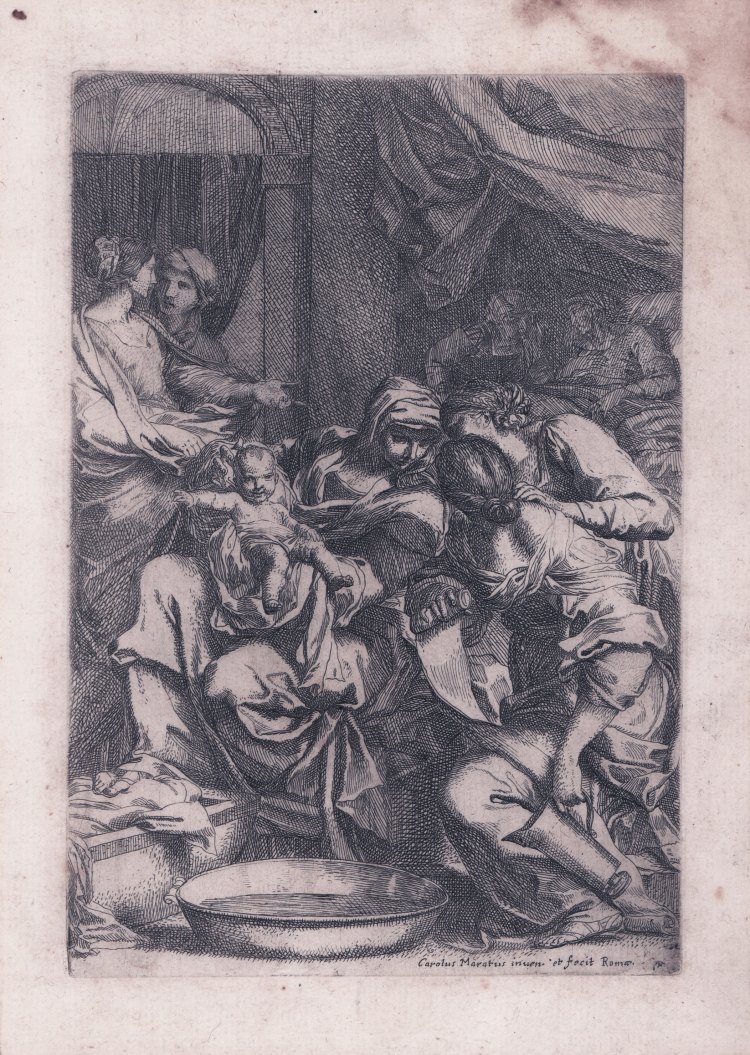




| Reference: | S7242 |
| Author | Carlo MARATTI |
| Year: | 1650 ca. |
| Measures: | 147 x 215 mm |



| Reference: | S7242 |
| Author | Carlo MARATTI |
| Year: | 1650 ca. |
| Measures: | 147 x 215 mm |
Etching, 1640-1660 circa, signed lower right “Carolus Maratus inuen. et fecit Romae”.
Second state, of two, with the inscription.
Magnificent example, printed on contemporary laid paper, wide margins, a stain on the upper right margin non affecting the image, otherwise in excellent condition.
In a room crowded with women who bathe and exclaim over her, the baby Virgin rests on her nurse's knee. In the background, in shadow, St. Anne rests in bed.
A preparatory drawing (261 x 404) for the figure of a woman crouching in the right foreground is conserved at the Kupferstichkabinett in Berlin (inv. Kdz 15221). Another drawing of the same sub ject in the same direction as the print is in Düsseldorf at the Kunstmuseum (inv. FP
8997).
A fine example, printed on contemporary laid paper, with margins, perfect condition.
|
Bartsch XXI.89.1 II/II; Bellini 6 II/II; TIB 4703.001.
|
Carlo MARATTI (Camerano 1625 – Roma 1713)
|
Italian painter, draughtsman and printmaker. He was the last major Italian artist of the classical tradition that had originated with Raphael, and his pre-eminence among the artists of his time marks the triumph of classicism. Nonetheless his art unites the virtues of disegno and colore, and he created a grandiose and decorative style that satisfied the demands of the Church. At the same time his late works had a grace and refinement that anticipated the development of the Rococo and Neo-classicism.
|
|
Bartsch XXI.89.1 II/II; Bellini 6 II/II; TIB 4703.001.
|
Carlo MARATTI (Camerano 1625 – Roma 1713)
|
Italian painter, draughtsman and printmaker. He was the last major Italian artist of the classical tradition that had originated with Raphael, and his pre-eminence among the artists of his time marks the triumph of classicism. Nonetheless his art unites the virtues of disegno and colore, and he created a grandiose and decorative style that satisfied the demands of the Church. At the same time his late works had a grace and refinement that anticipated the development of the Rococo and Neo-classicism.
|